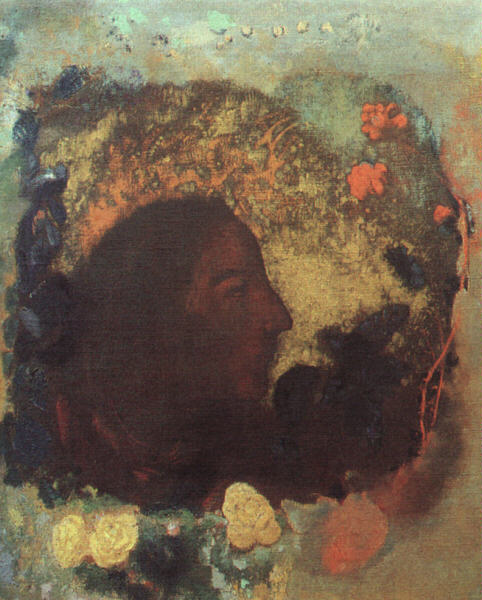Introduction to Modern Art 12/01/04 – Symbolism
A vague topic, a counter current in modem art as opposed to Realism. Munch’s Scream is the best example of symbolism. Note Courbet’s “angel” quote (“I cannot paint an angel as I have never seen one”). Phenomenology of vision. Symbolism emphasises painting from the imagination. Inner or imaginative vision. See Gaugin, catholic women with a vision after a sermon. Gaugin imagining how women imagine an angel (so twice removed imagination). Imagination and spirituality are key aspects of Symbolism. How does it feel to look at a painting? Cubists are looking at vision, the inner vision and reality. Main historical period was 1880-1890 but some artists go into 20th Century. More of an approach than a style. It was not a coherent group of artists. It was as much a term used for literature and music as for art. Emphasised subjective anti-realist tendencies. Fashion for melancholia, esoteric religions, spiritualism. New interest in exotic and spiritual. Sometimes linked to the fin-de-siecle. There was a positive altitude to science and modernity (eg. science will lower prices and everyone will be happy) in the 19th Century that started to be called into question by the end of the century. Earlier romantic attitudes were being re-evaluated. Escapism. Escape to a primitive society to get back in touch with values. The occult and the spiritual. Aspects of Symbolism. 1. Enhanced colours. Some art historians see Symbolism as the first step towards abstraction. Colour is used to create a mood and reflect an inner state. Colour is used to express and create a feeling in the viewer. 2. Swirling shapes. Parallels with visual media and sound, e.g. with notes and rhythms. 3. Use of symbols. But not a reference to a known iconography but by trying to create a feeling through an irrational appeal. Interiority. Sometimes symbolist artists are classed under Post-Impressionism. Moreau and Puvis de Chevannes are seen as precursors to late 19th Century Symbolism. Slide 4 from as early as 1856 was being rediscovered by young artists as precursors. Dark and irrational themes. Moreau “I believe only in what cannot be seen – only what l feel” Puvis de Chavannes wanted to go back to before Raphael to the time of mural printing. The Pre-Raphaelites can be seen as Symbolists. UK decadence, art for art’s sake, Oscar Wilde, Beardsley. Perverse, sexual current of e.g. Salome, repressed, hidden meaning. Linked to readings of e.g. Freud. The unconscious and the repressed. Symbolists were also liked by the Surrealists. Odilon Redon was a maverick and a loner. He was interested in black and white, charcoal, engravings. See Slide 6, who is Sita? The wife of Rama, from Indian mythology, the story of Ramayama. The point at which she throws her jewels down to earth. Some critics dismissed his work as illustrative (i.e. referring to a narrative). The other slide (8) could be a reference to the hostia (catholic wafer) but could just be personal childhood memory. Could connect to Goya’s work, dreams and nightmares, He moves to colour and never goes back to black & white. Very matt colours that give a sensation of pure pigments. See Mitch Kapor (?) a modern artist that uses pure pigments. Pure pigments leave an after image of the opposite colour. Intensity of colour related to the intensity of feeling. Pont-Aven School, summer 1888 Gaugin and Bonnard were working together in Pont-Aven in Brittany. Must really a school. Main occupation of area was harvesting seaweed and a cheap tourist location. Gauguin also saw the culture as primitive. For example, a Breton costume was worn, although by this period only on special occasions. There was a special ceremony called the “Pardon” that was much painted. The Pardon was to abase yourself and ask for forgiveness from sin. Spirituality based on primitive culture, without question. Taking for granted, not scientific. “Pardons” were a common subject for late 19th Century paintings. Strong dark outlines were a primitive representation by the artist. Symbolism was also referred to as Cloisonnisme, referrering to the strong flat colours of enamel work. The wrestling matches that took place afterwards were also frequently painted. Also see slide 10 that shows elements of pointillism. Around 1880 a group of artists became known as the Nabis (Hebrew for prophet). Secret societies were common. The Nabis Included Bonnard, Vuillard (these two are called Intimists), Denis and Bernard. Other lesser known artists were also involved. Interested in the interior reality. Domestic interiors were a metaphor for people’s inner feelings. Finding subject matter in the minutiae of everyday life, women, children, pets. Note pointillist technique – is it wallpaper or is it newspaper. Slightly disturbing figures of Vuillard. Influence of Japanese prints. By the end of his life he depicted his bathroom over and over again with his wife washing, even after she had died (was she herself an obsessive – washing all the time and did he want to continue the obsession?). An interior world of remembrance. Some of these artists became devalued in the 1950’s and 1960’s as they were seen as too narrative. They were rediscovered in the 1980’s. Van Gogh and Gauguin in Arles. Gaugin was peripatetic to Paris. He assigned all his assets to his wife and daughter and started wandering. Slide 17 Gaugin self-portrait and portrait of Van Gogh. He portrays himself as saintly (possibly as St. John the Baptists). He had also portrayed himself as Christ. Slide 8 not as memorable – looking down on Van Gogh. Van Gogh painted his own chair as basic and Gaugin’s as more refined, with armrests. It is difficult not to read these artists in terms of their lives, especially if they are seen as symbolists who intend to represent inner meaning. There is a danger of a very reductive approach to interpreting Van Gogh (i.e. lead poisoning, epilepsy), leading to “he painted this way because'” and forgetting every other interpretation. Slide21 – red pool table at night. Gaugin – Slide 22: women learning on elbow, men drinking in the background. Slides 23-26 Melancholy, Anxiety, Jealosy, Madonna – strong feelings – still a narrative and representational content part of message is conveyed through the form of the painting. At this time Paris was the centre of modern art and although artists moved away they still look to Paris. For example, Munch moved from Norway to Paris. Part of hs work is related to Art Nouveau. Gaugin — Tahiti — Primitivism – Slides 27-30. He obtained a grant to move from Arles to Tahiti as a French artist, as it was a French colony. He thought he could find unspoiled nature. Interest in Orientalism changed to an interest in primitive cultures including cave painting. Related to ideas of the “noble savage” (namely, people start as unspoiled and get spoiled by culture of the wrong type). Gaugin was disappointed in Tahiti as he felt it was already spoilt by civilization and missionaries. Gaugin was not trying to become uncivilised but more civilised by being more modem by understaning (at least superficially) primitive culture — he saw himself as more sophisticated, more modern and more avant garde and he was exploiting their culture by getting food and sex from a local marriage that was permitted despite his real marriage in France. A virgin territory to energise modem art and a non-realistic alternative, an inner truth. Before going to Tahiti he went to the 1889 exhibition on primitive art in Paris (mostly African Art), see Griselda Pollock’s analysis of Gaugin. Gaugin was interested in experimenting with a variety of media, simple expression and simple materials and the idea of process and forgetting the heritage of Western Art. Imitating African Art. Slide 30 is a posthumous and imagined portrait by Redon, who Gaugin had helped establish despite the fact that Redon was older. Synthetism — simply another way of talking about Symbolism – content, concern with form and concern with inner and outer truth.
Slide 1: 1. Paul Gauguin (1848-1903), ‘The Vision after the Sermon. Jacob Wrestling with the Angel’, 1889.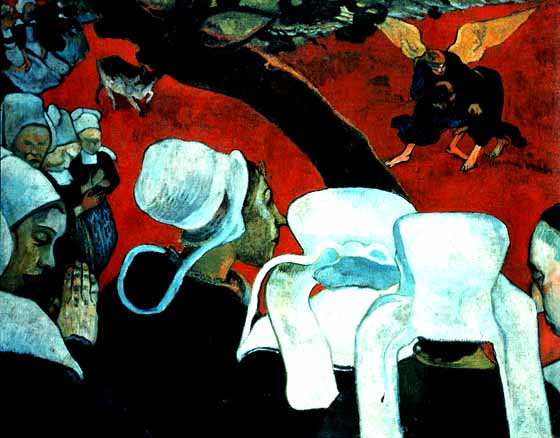
Slide 2: 2. Edvard Munch (1863-1 944), ‘The Scream’, 1893.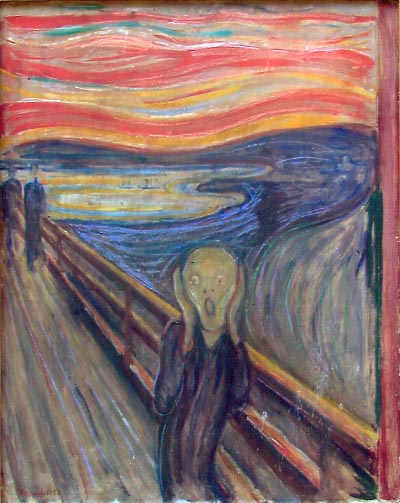
See also: Nabis, School of Pont-Aven, Cloisonnisme, Synthetism, Primitivism
- 1886 Jean Mor'as -> Symbolist manifesto, Le Figaro litt'raire new sensibility in literature and music *1891 Georges Aurier, ‘Symbolism in painting’, Mercure de France re. Gauguin and Van Gogh.
Slide 3: 3. Gustave Moreau (1826-98), ‘The Apparition’, 1874-6.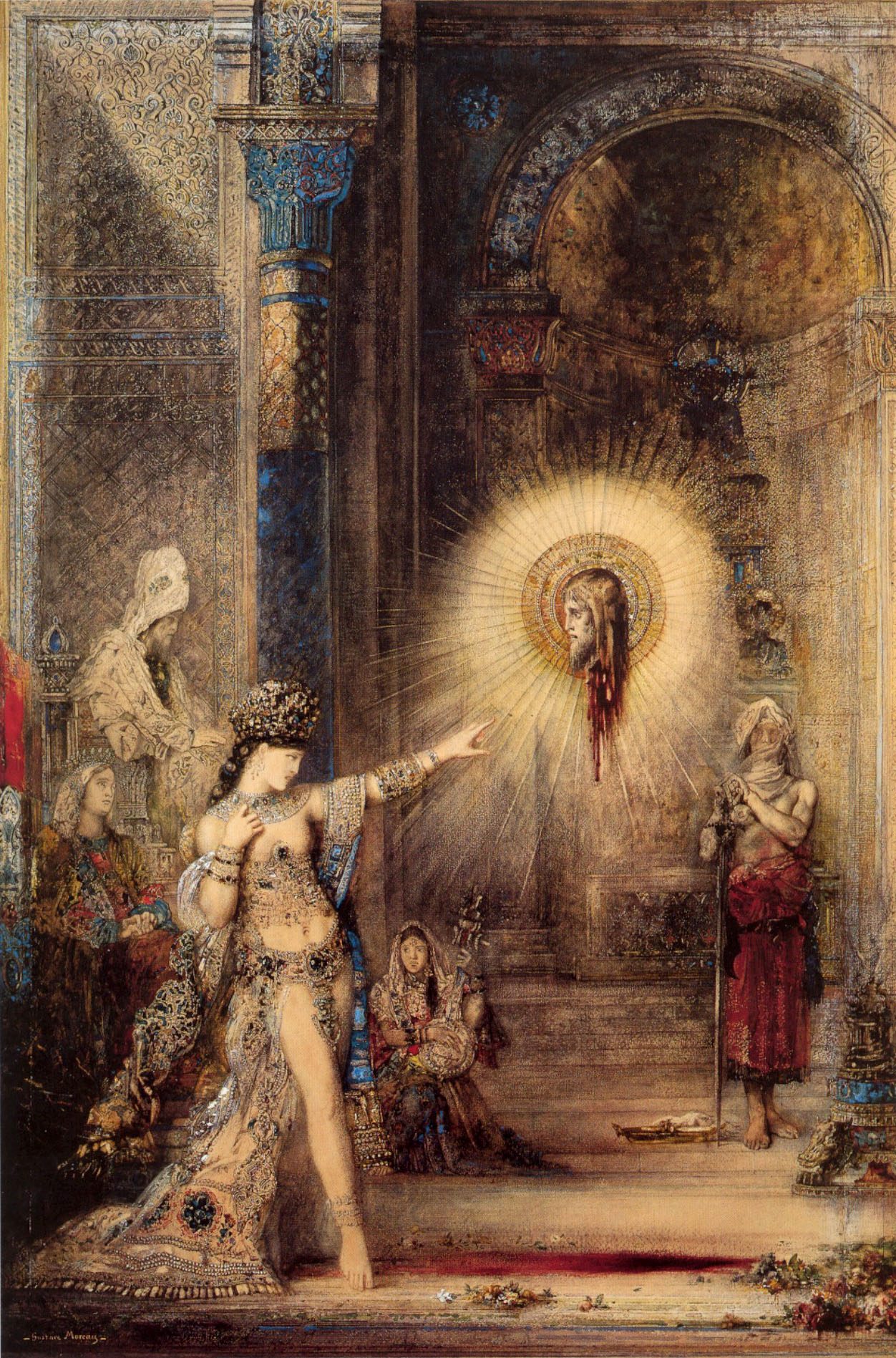
Slide 4: 4. Pierre Puvis de Chevannes (1824-98), ‘Decollation of John the Baptist’,1856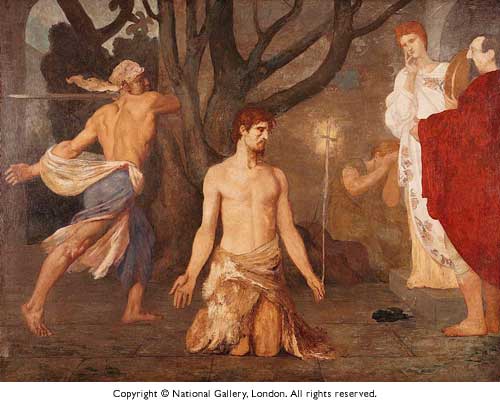
Slide 5: 5. Odilon Redon (1840-1916), ‘Strange Flower (Little Sister of the Poor)’, 1880, charcoal on paper.(image not found)
Slide 6: 6. Odilon Redon, ‘Sita’, 1893, pastel and crayon on paper.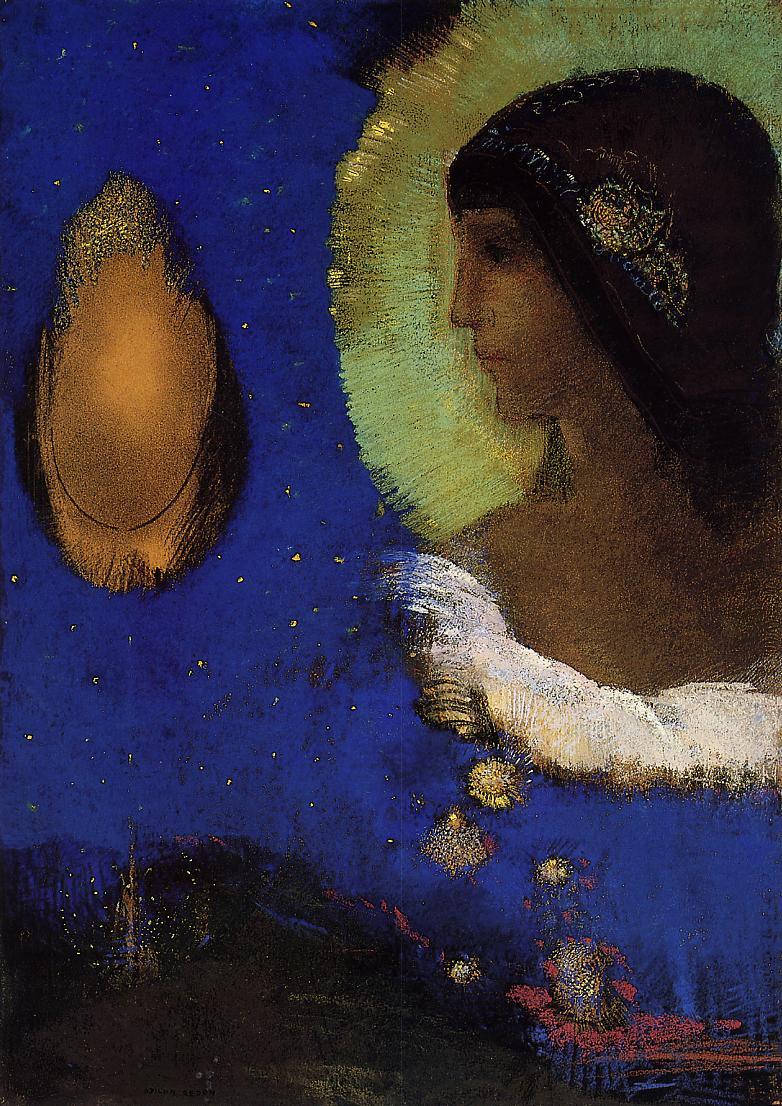
Slide 7: 7. Emile Bernard (1868-1 941), ‘Pont-Aven’, 1892.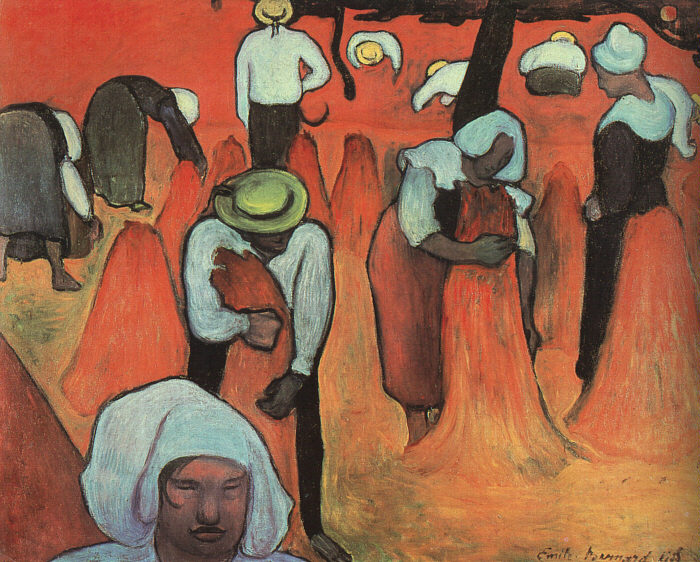
EMILE BERNARD
(1868-1941) The French painter and writer who seemed to know everyone; he was pals with Toulouse-Lautrec, Louis Anquentin (with whom he developed Cloisonnism, a style using flat areas of colour with bold dark outlines) and worked closely in Paris and Pont-Aven with Paul Gauguin. He was somewhat left behind by his friends as a painter, and began to concentrate on writing. He published Van Gogh ‘s letters in 1893, an interview with C'zanne in 1905, and was particularly concerned with Post-Impressionism
The picture shown is one of his Pont-Aven pictures.
Slide 8: 8. Emile Bernard, Breton Women at a Pardon’, 1888.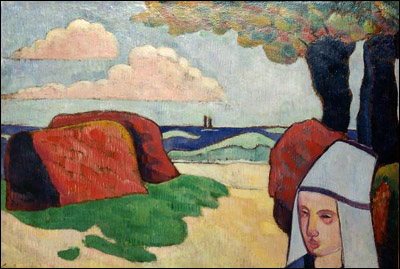
Painting subsituted as Women at a Pardon could not be found
Slide 9: 9. Paul Gauguin, ‘The Vision after the Sermon’, 1889.
Slide 10: 10. Maurice Denis, ‘The Pardon at Perros’, c.1890-91.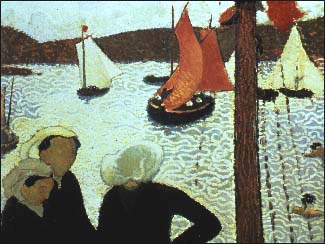
Maurice Denis
French Nabi Painter, 1870 – 1943
Denis Regatta at Perros. jpg
Slide 11: 11.Edouard Vuillard (1868-1940), ‘Mother and Sister of the Artist’, 1892.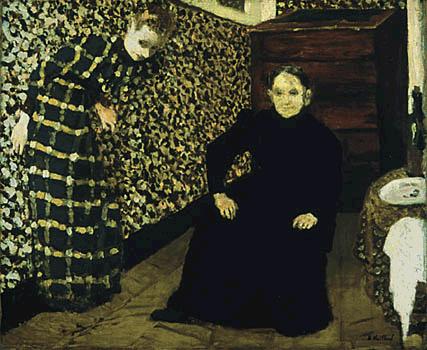
Slide 12: 12.Edouard Vuillard, ‘The Newspaper’, c.1898.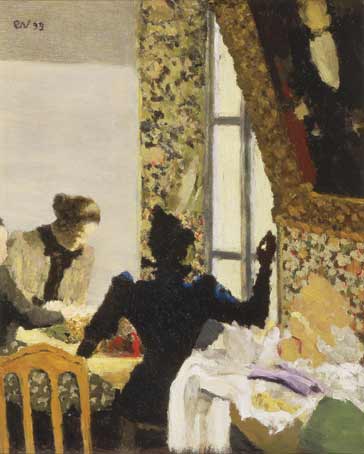
The Newspaper could not be found so this is a scene he painted at home five years previously.
Slide 13: 13.Pierre Bonnard (1867-1947), ‘Woman in a Check Dress’, c.1891.
Slide 14: 14. Pierre Bonnard, ‘The Meal’, 1899.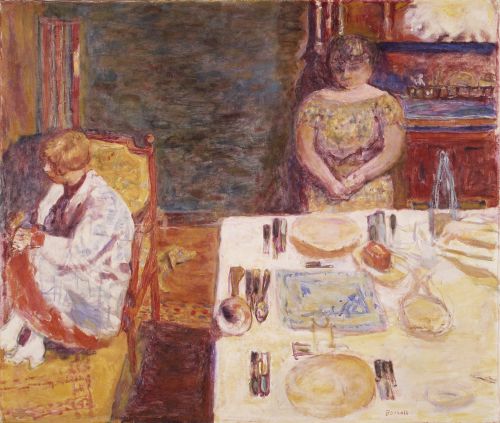
Could not find The Meal 1899, this is a much later pictureBefore Dinner
Slide 15: 15. Pierre Bonnard, ‘The Large Nude’, 1937-9.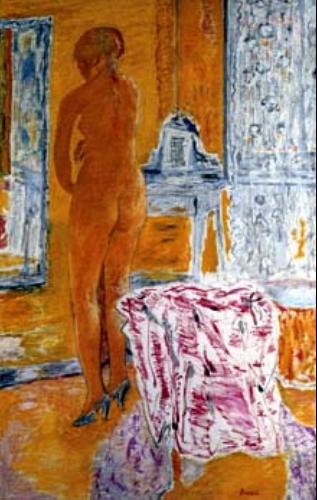
Slide 16: 16. Pierre Bonnard, ‘Nude in the Bath and Small Dog’, 1941-6.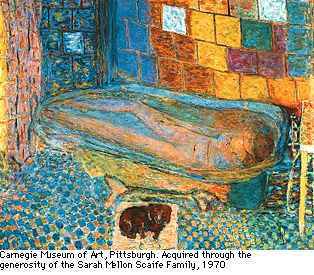
Slide 17: 17. Paul Gauguin, ‘Self-portrait’, 1889.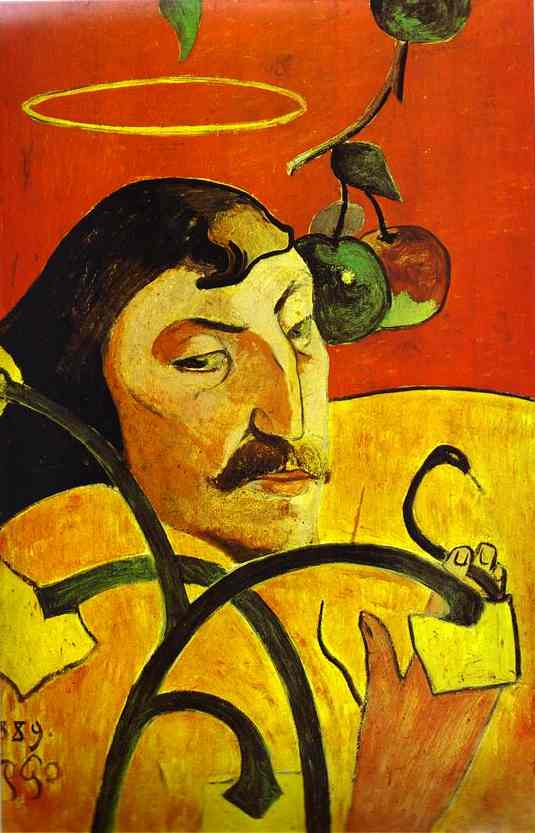
Slide 18: 18. Paul Gauguin, ‘Portrait of Vincent Van Gogh Painting Sunflowers’, 1888.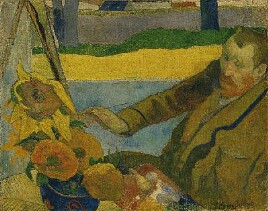
Slide 19: 19. Vincent Van Gogh (1853-1890), ‘Sunflowers’, 1888.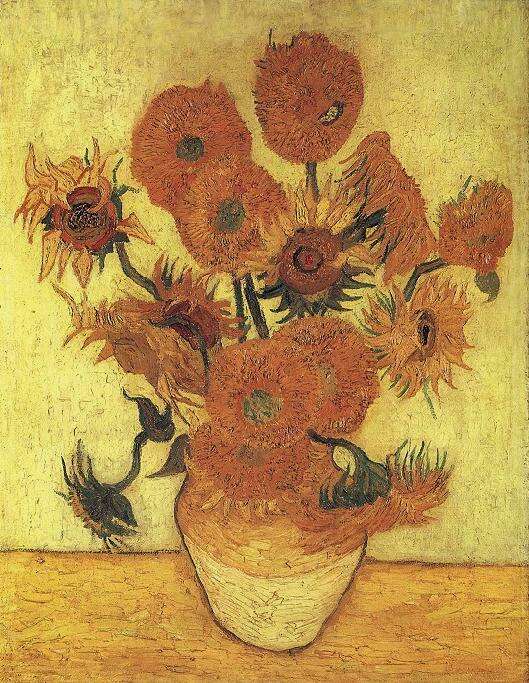
Slide 20: 20. Vincent Van Gogh, ‘Gauguin’s Chair’, 1888.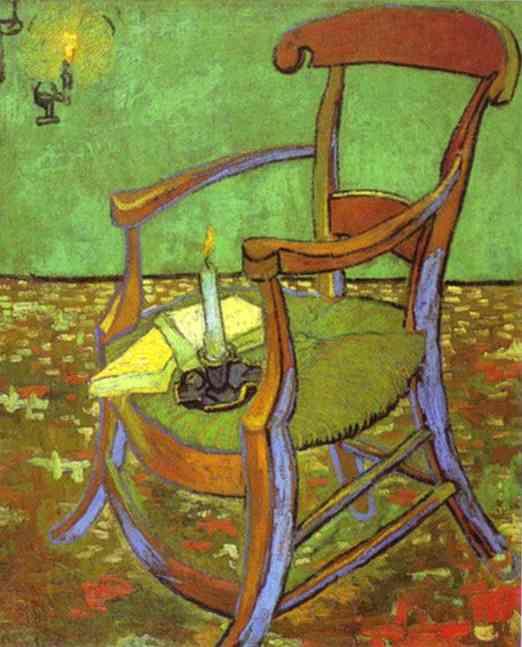
Slide 21: 21.Vincent Van Gogh, ‘Night Caf'’, 1888.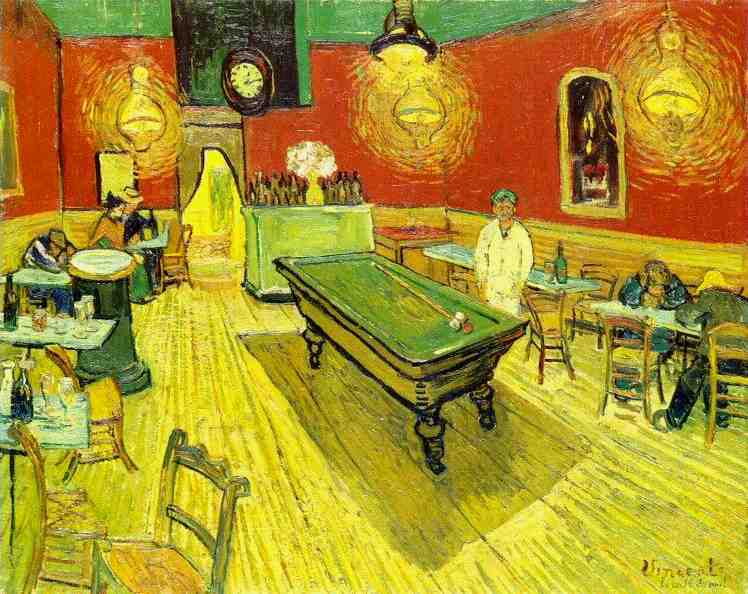
Slide 22: 22. Paul Gauguin, ‘Caf' at ArIes’, 1888.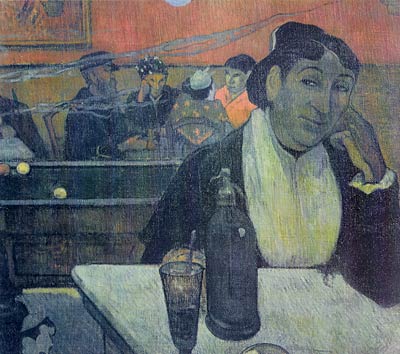
Slide 23: 23.Edvard Munch, ‘Melancholy’, 1892.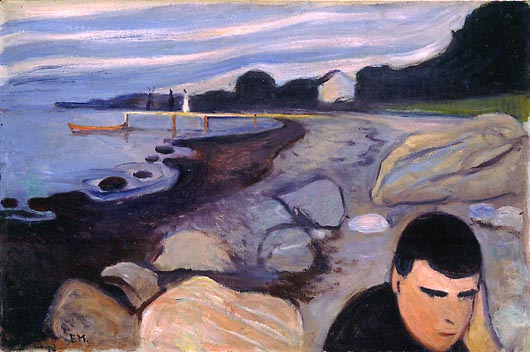
During the 1890 s, Munch spent several summers in 'sg'rdstrand, in the company of friends from Kristiania ‘s bohemian circle. The model for the foreground figure, resting his head on his hand, was writer and art critic Jappe Nilssen. The reason for his gloom is to be found on the jetty in the background: his loved one is making her way out to the boat together with another man and the boatman.
The landscape reflects the quiet, pensive mood. The motif is simplified and the stones in the foreground are stylised. Depth is achieved by means of the undulating shoreline and the small size of the background figures which are merely suggested by a few swift brushstrokes. During his years in Paris, Munch had been influenced by the Synthetists’ summary rendering of subject – matter and by the flowing contours of Art Nouveau. Rodin ‘s famous sculpture The Thinker had revived the centuries – old pose signifying introverted reflection, familiar from reliefs on classical tombs and also, for example, from D'rer ‘s well – known engraving Melancholy where Melancholia personified leans her head on her left arm.
Melancholy is a cardinal work among Munch’s Frieze of Life paintings. It exists in several, differing versions and was the point of departure for one of the best – known woodcuts.
Slide 24: 24.Edvard Munch, ‘Anxiety’, 1892.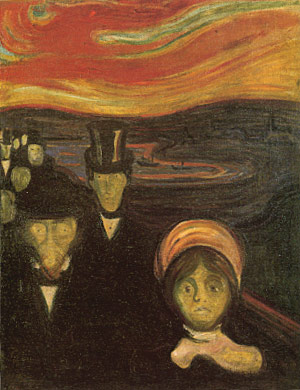
Slide 25: 25.Edvard Munch, ‘Jealousy’, 1895.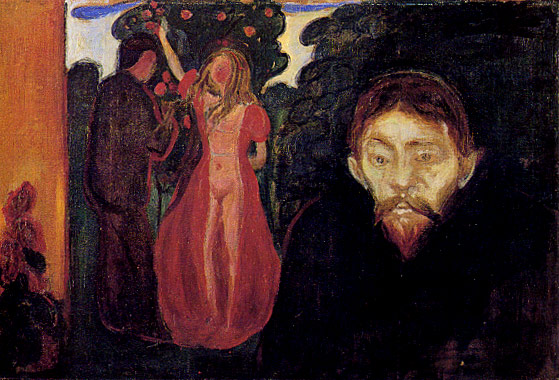
Slide 26: 26.Edvard Munch, ‘Madonna’, 1894-5.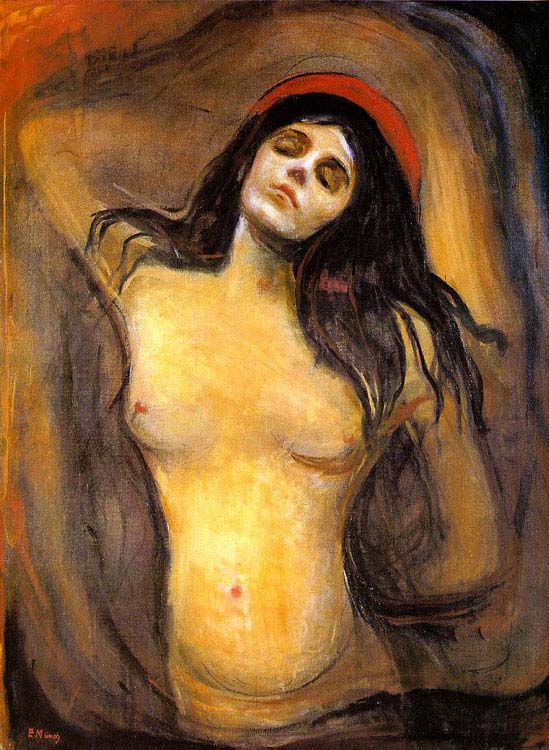
A naked woman lies on her back with one hand under her neck and the other in the small of her back. Her eyes are closed, and her long, dark hair flows down over her shoulders and arms. Around her head is a red halo, echoed by curving lines in the background. Munch had assimilated important influences during his years in Paris and Berlin. In the book Das Werk des Edvard Munch, the Polish writer Stanislaw Przybyszewski describes this painting as the moment Life and Death shake hands.
In the lithographic version, Munch emphasises the erotic aspect further by adding round the composition a frame swimming with sperm cells, and an embryo in one corner. Woman is both elevated and abased. As a Madonna with the red halo of martyrdom she is an object of religious devotion, yet at the same time she is man ‘s sex object. Sensual satisfaction is likened to the moment of death. Characteristic of the 1890 s are both the simplification of form and also the rhythmical wavy lines which are repeated in the figure and the surrounding areas.
Slide 27: 27. Paul Gauguin, ‘Nevermore, 1897.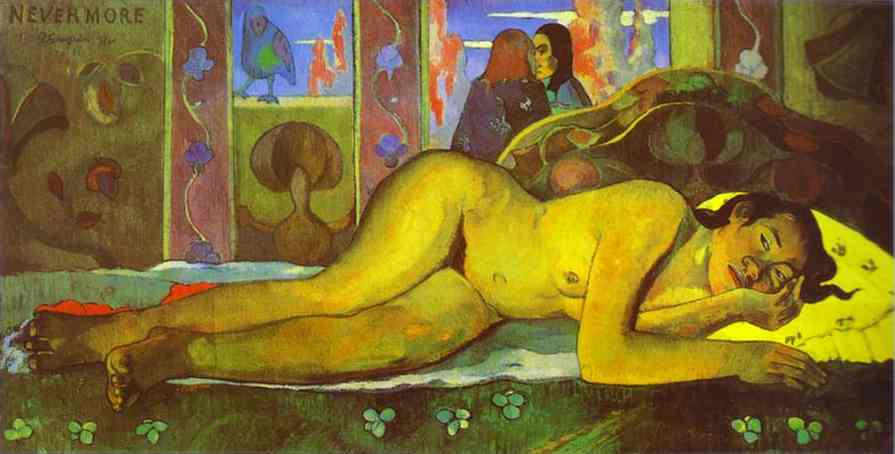
Slide 28: 28. Paul Gauguin, ‘Where do we come from? What are we? Where are we going?’ 1897.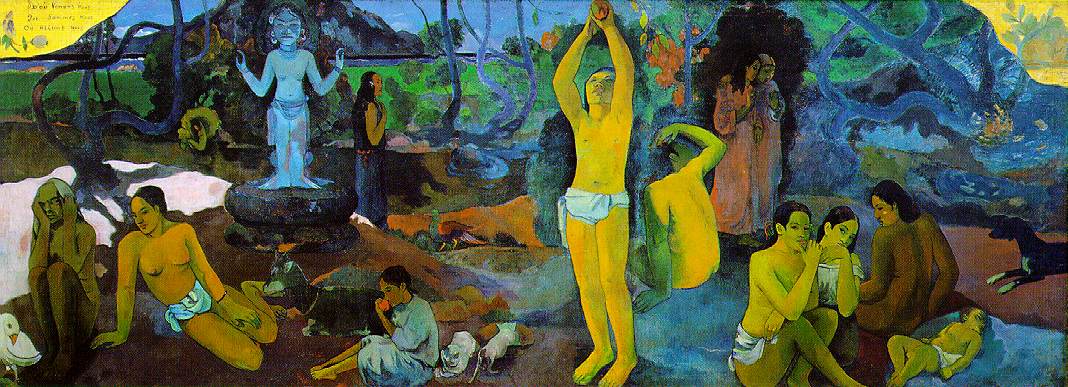
Slide 29: 29. Paul Gauguin, ‘Selfportrait’ pot, 1889, tinted, glazed stoneware.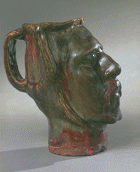
Slide 30: 30.Odilon Redon, ‘Gauguin’, 1904.